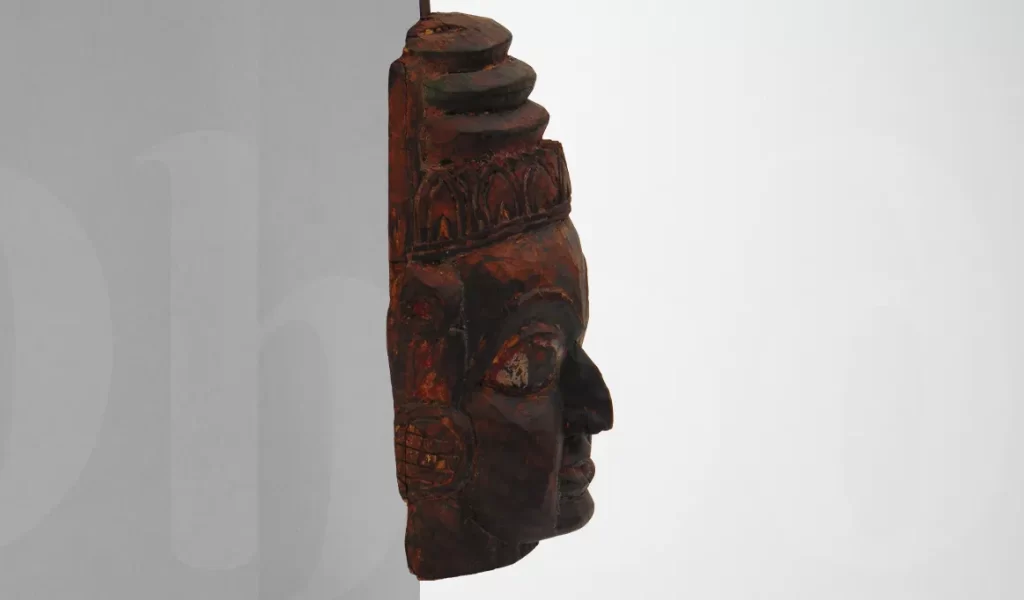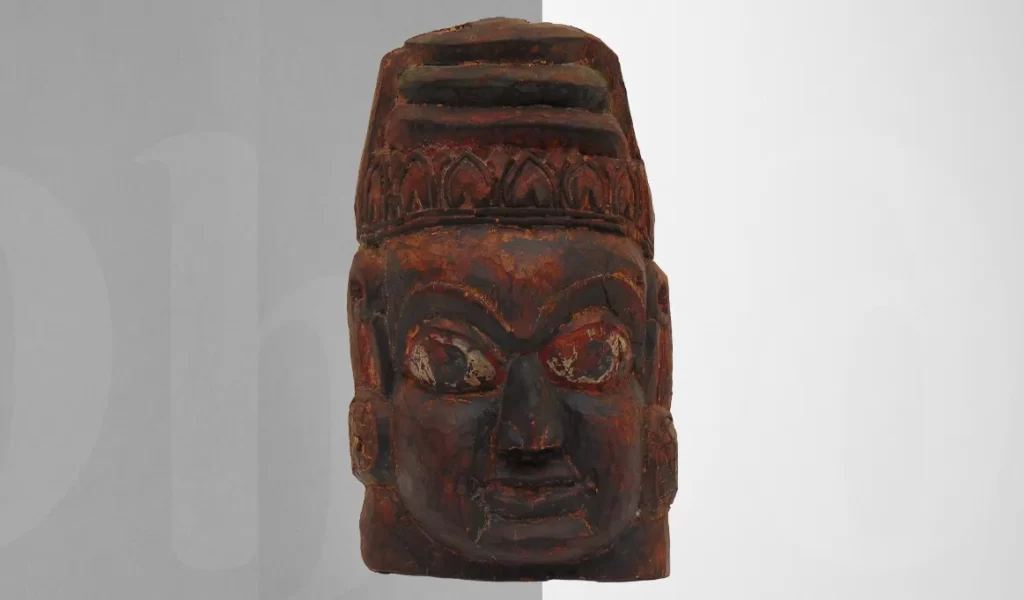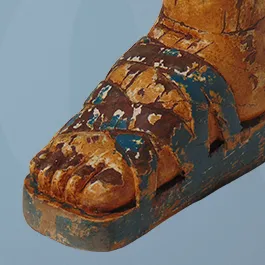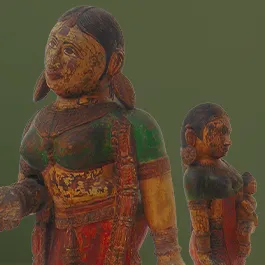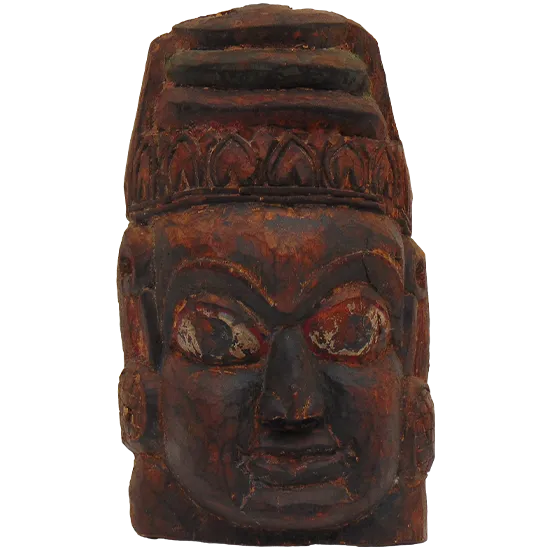
Small Krishna mask
A decorative, small festival mask representing Lord Krishna in excellent condition with original colour and patina. It would have been used during folk reenactments of the Ramlila in Orissa. Prominent features include a tiered painted crown, Shaivite tilaka.
Krishna, Sanskrit Kṛṣṇa, one of the most widely revered and most popular of all Indian divinities, worshipped as the eighth incarnation (avatar, or avatara) of the Hindu god Vishnu and also as a supreme god in his own right.
Krishna became the focus of numerous bhakti (devotional) cults, which have over the centuries produced a wealth of religious poetry, music, and painting. The basic sources of Krishna’s mythology are the epic Mahabharata and its 5th-century-CE appendix, the Harivamsha, and the Puranas, particularly the Bhagavata-purana. The child Krishna was adored for his mischievous pranks; he also performed many miracles and slew demons. As a youth, the cowherd Krishna became renowned as a lover, the sound of his flute prompting the gopis (wives and daughters of the cowherds) to leave their homes to dance ecstatically with him in the moonlight.
Krishna’s personality is clearly a composite one, though the different
elements are not easily separated. Vasudeva-Krishna was deified by the 5th century BCE.
The cowherd Krishna was probably the god of a pastoral community. The Krishna who emerged from the blending of these figures was ultimately identified with the supreme god Vishnu-Narayana and, hence, considered his avatar. His worship preserved distinctive traits, chief among them an exploration of the analogies between divine love and human love. Thus, Krishna’s youthful
dalliances with the gopis are interpreted as symbolic of the loving interplay between God and the human soul.
Additional information
| Region | East India, Odisha state |
|---|---|
| Century | XX Century |
